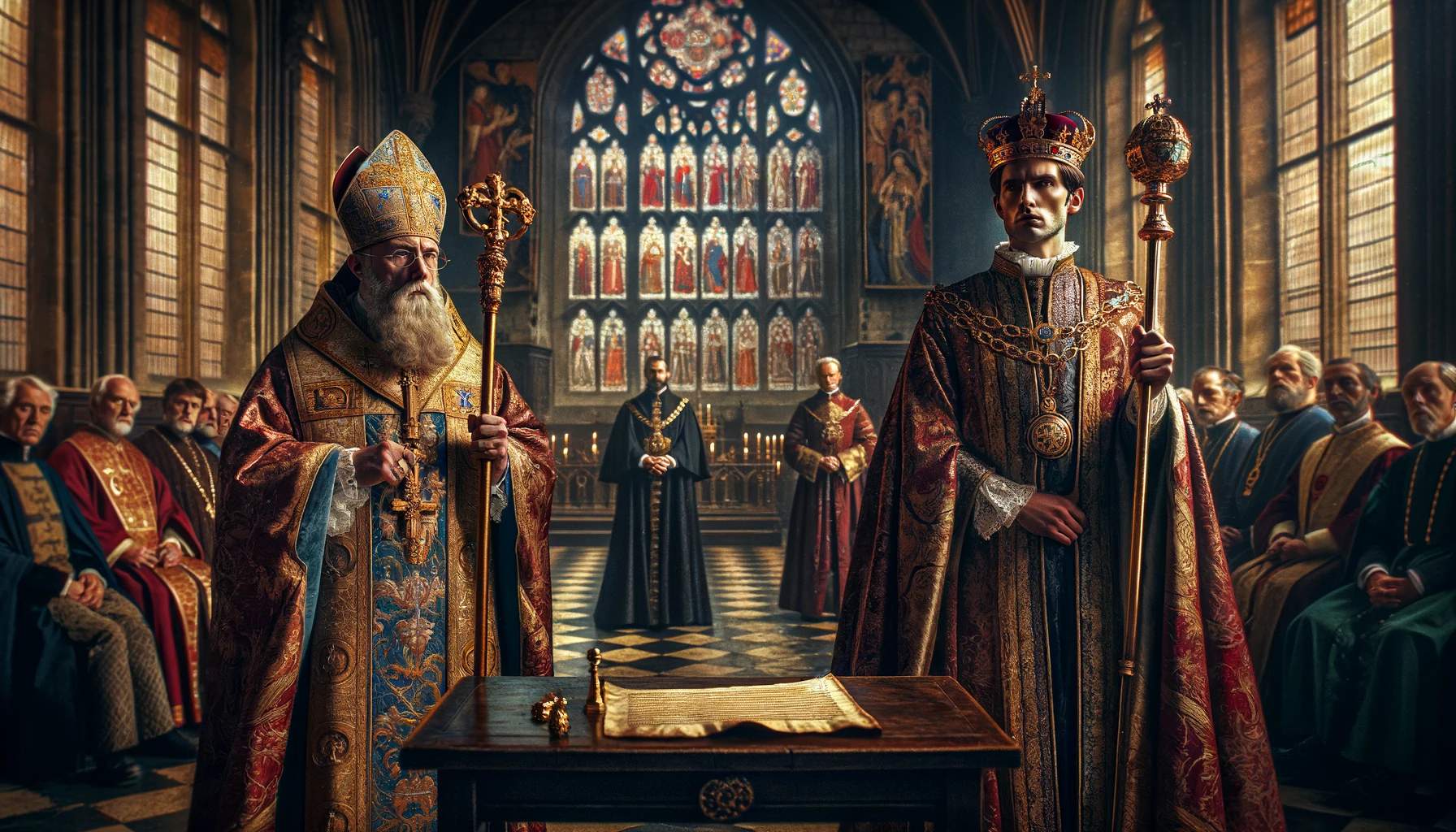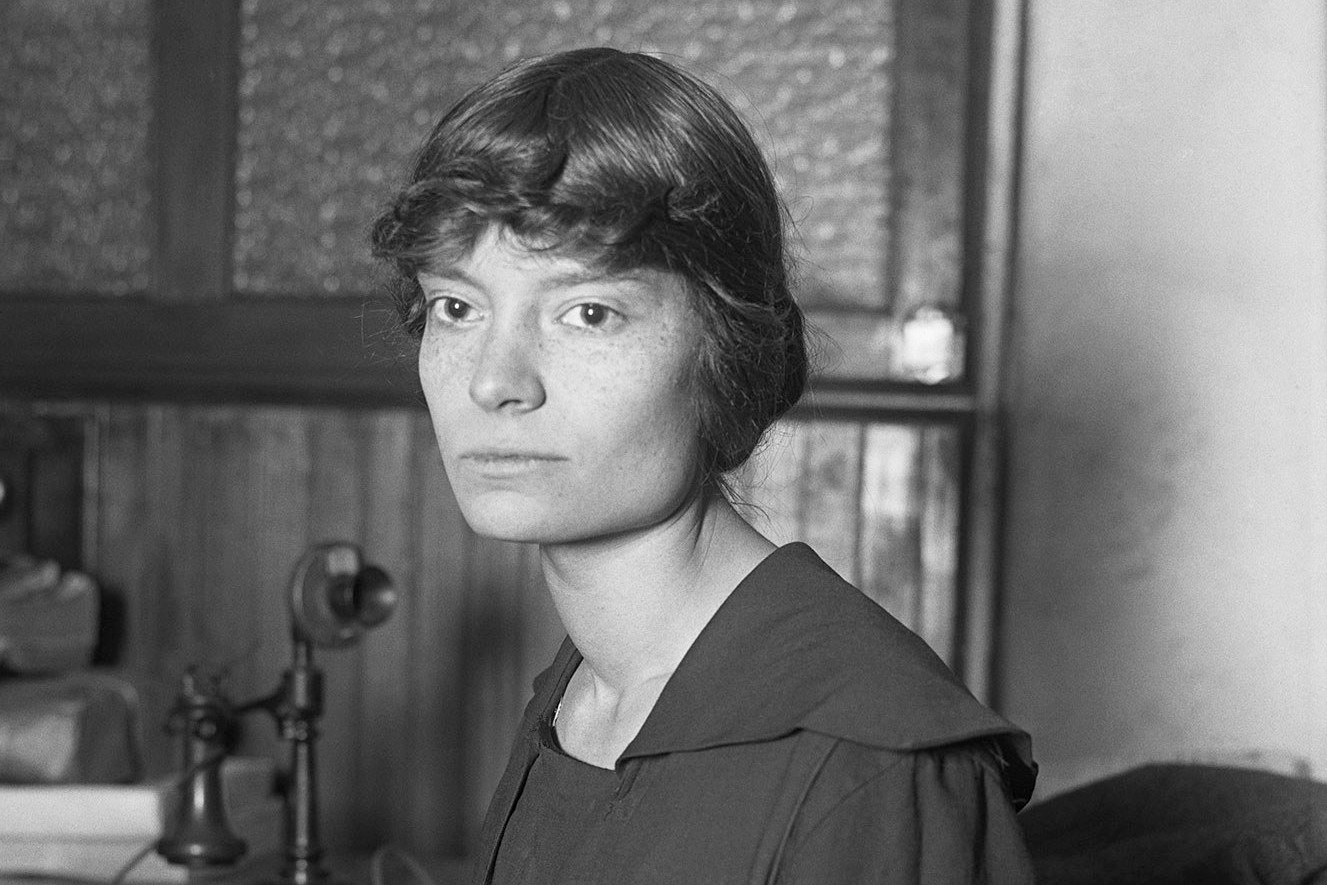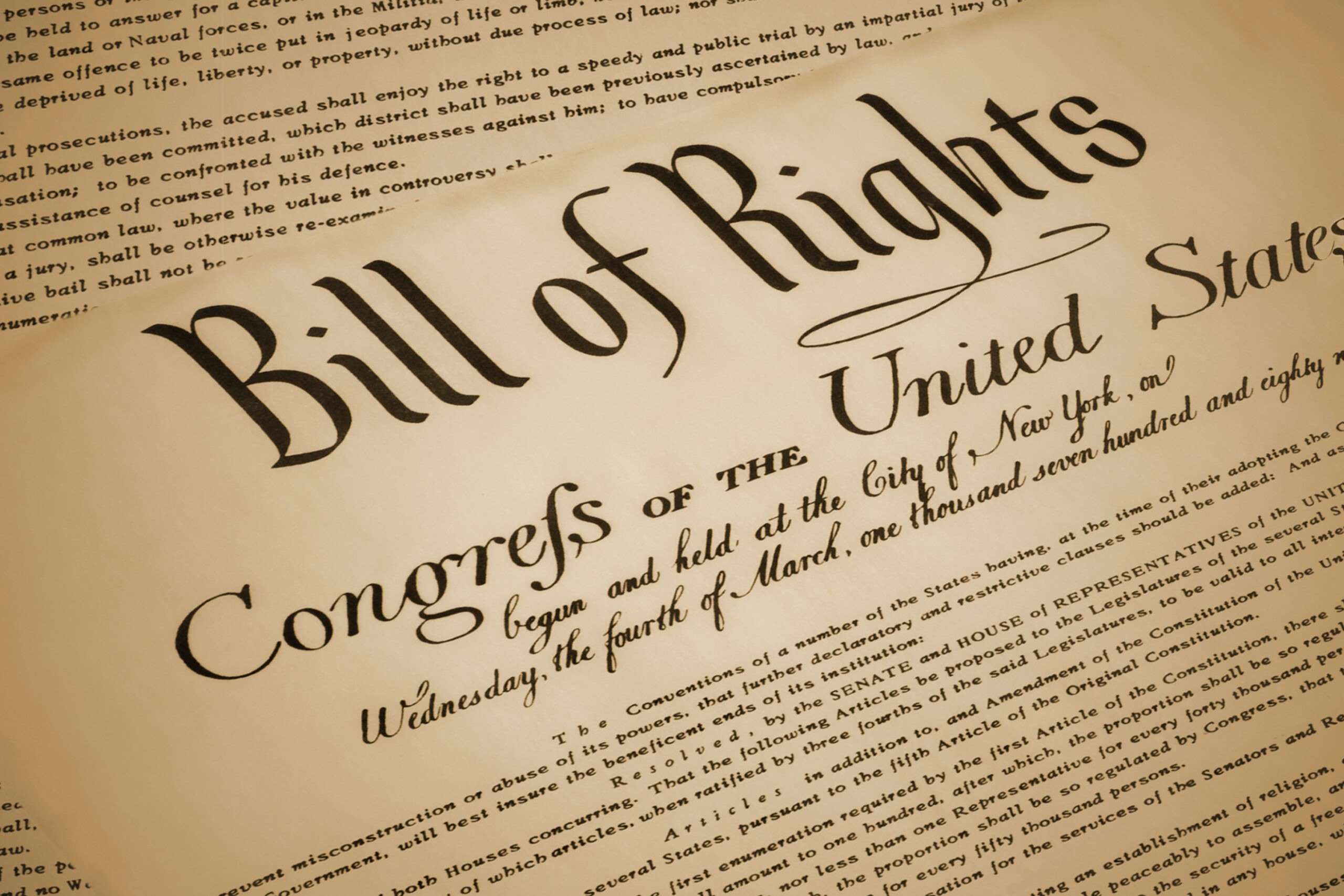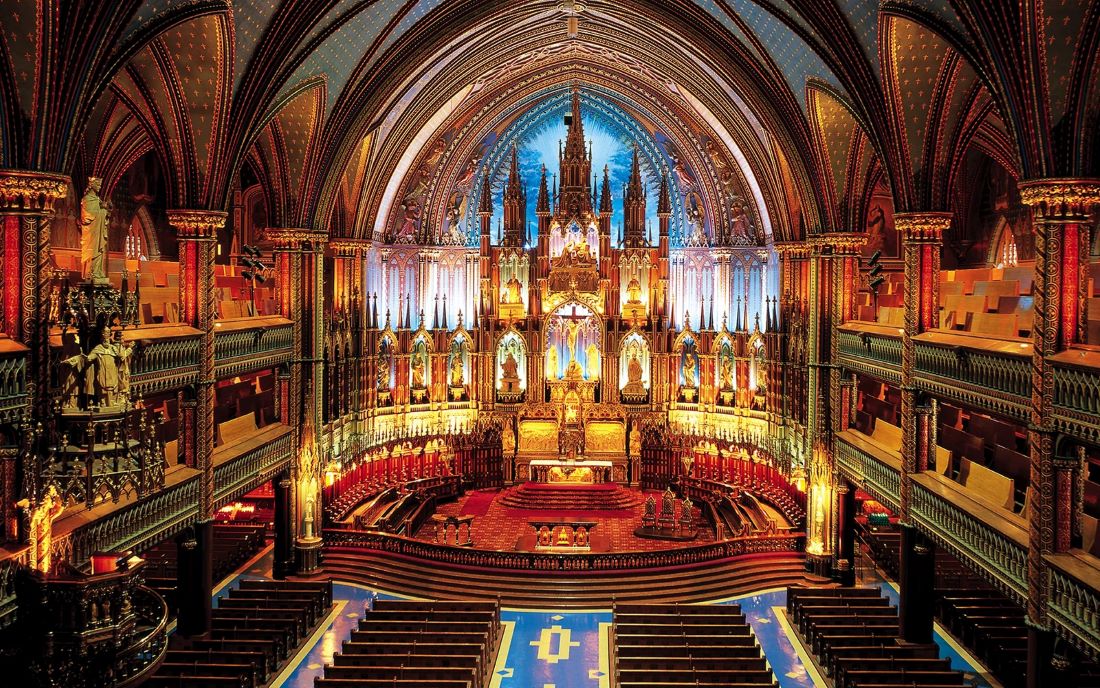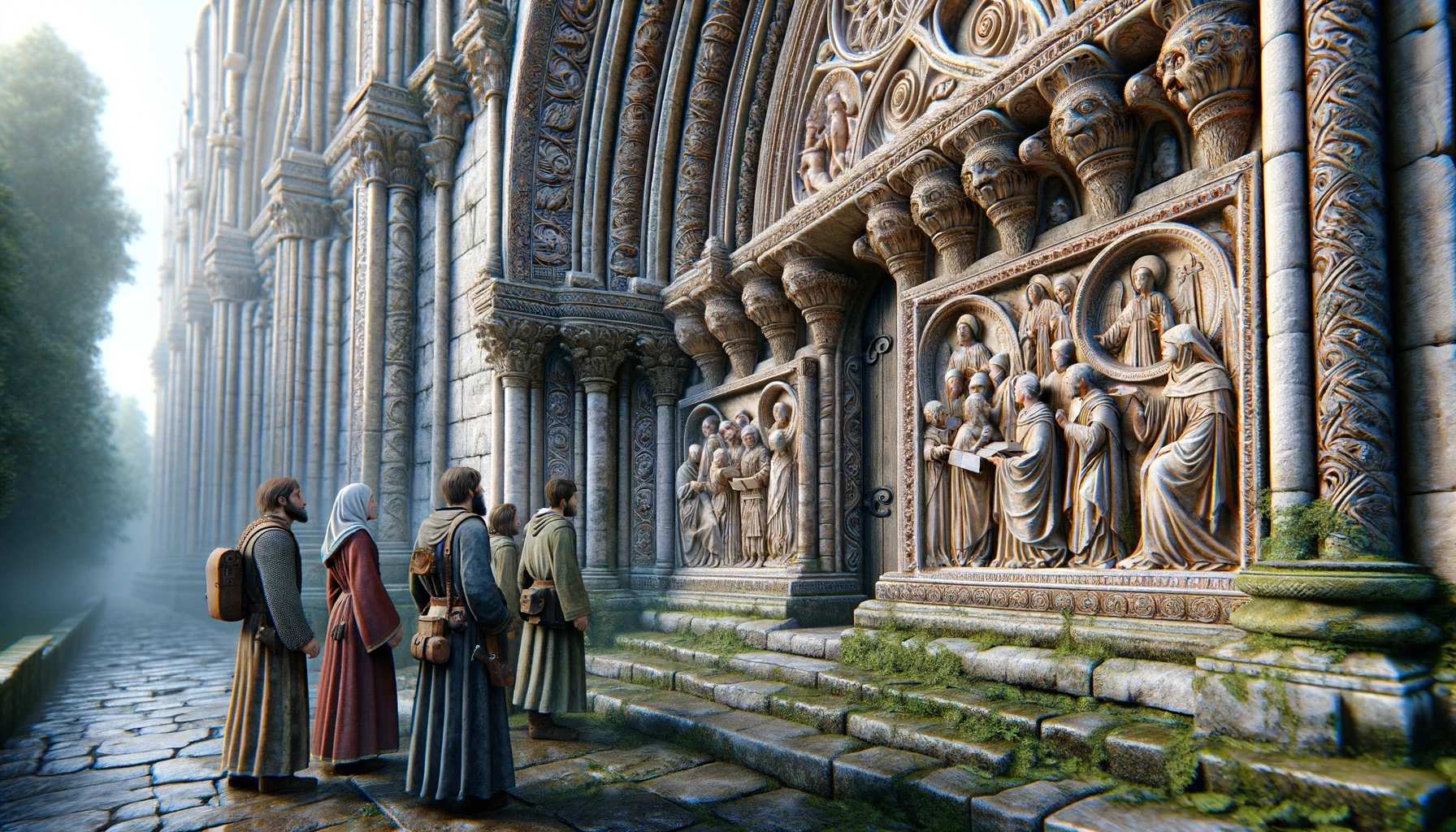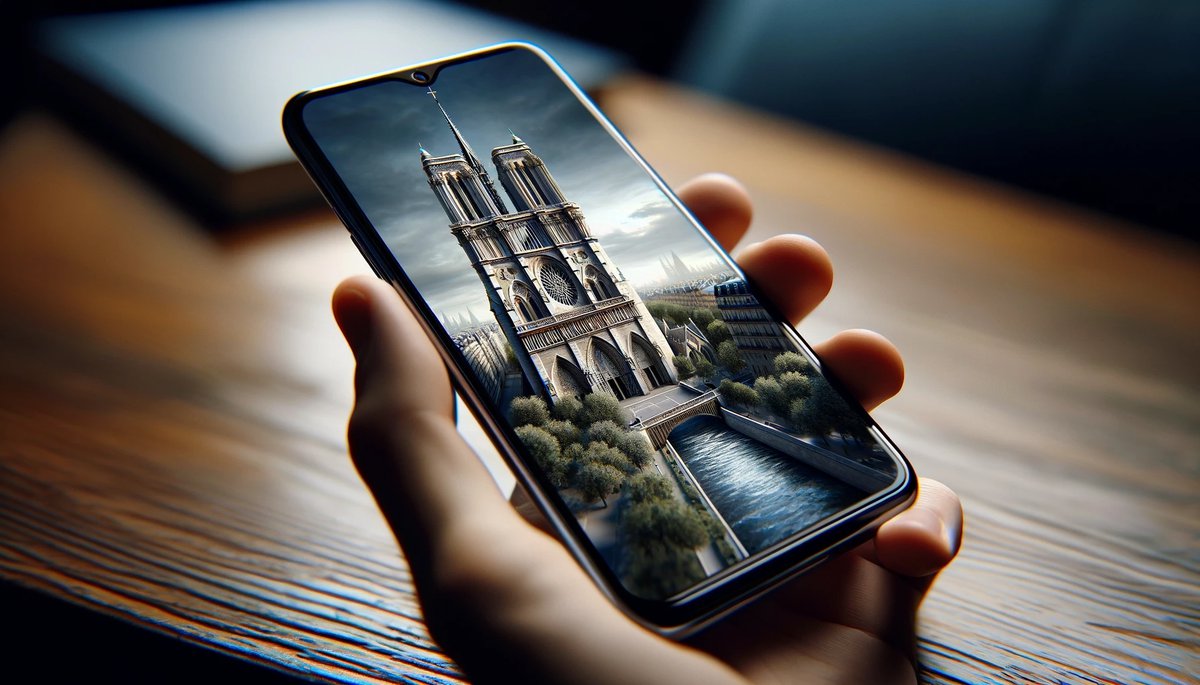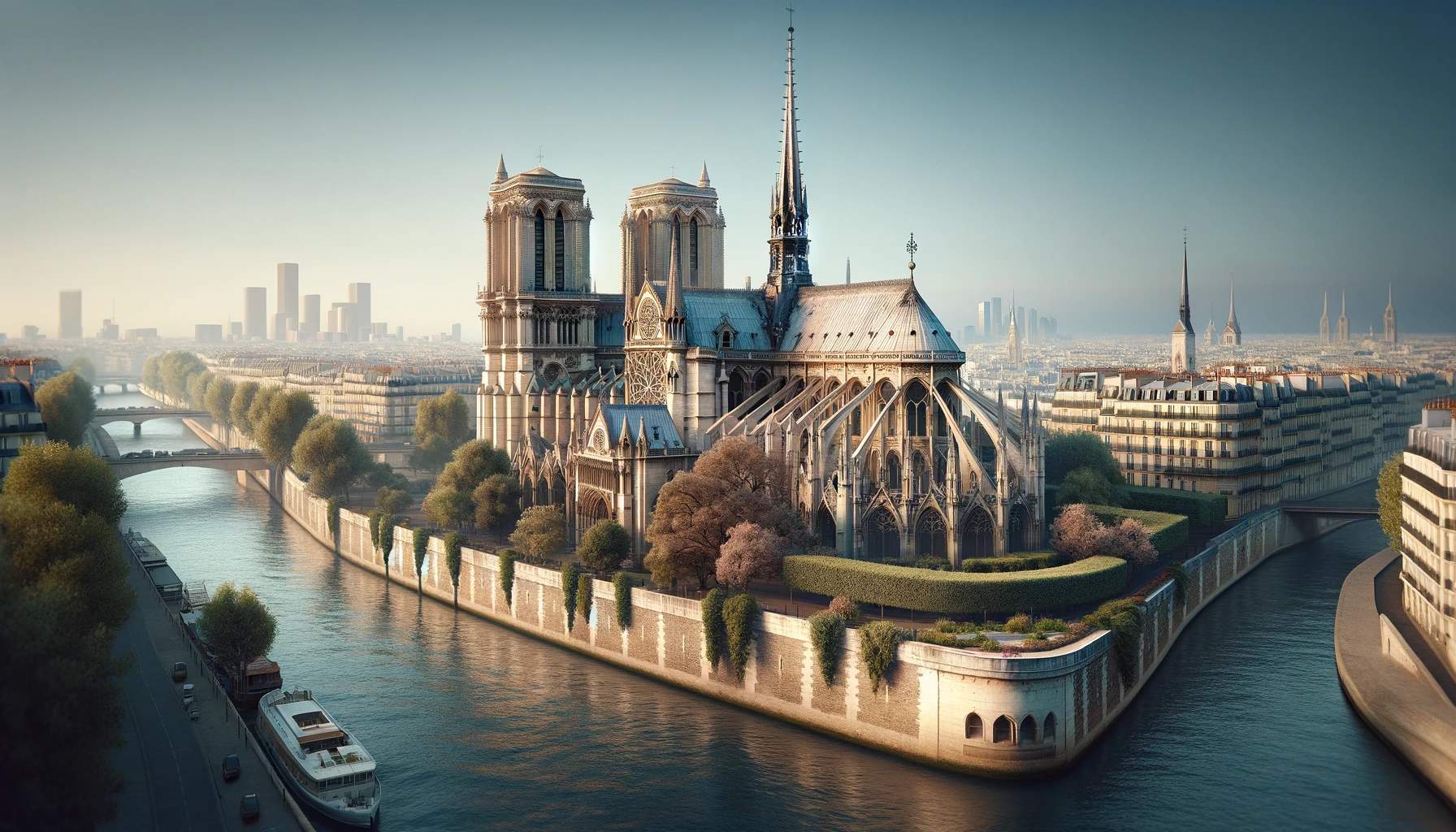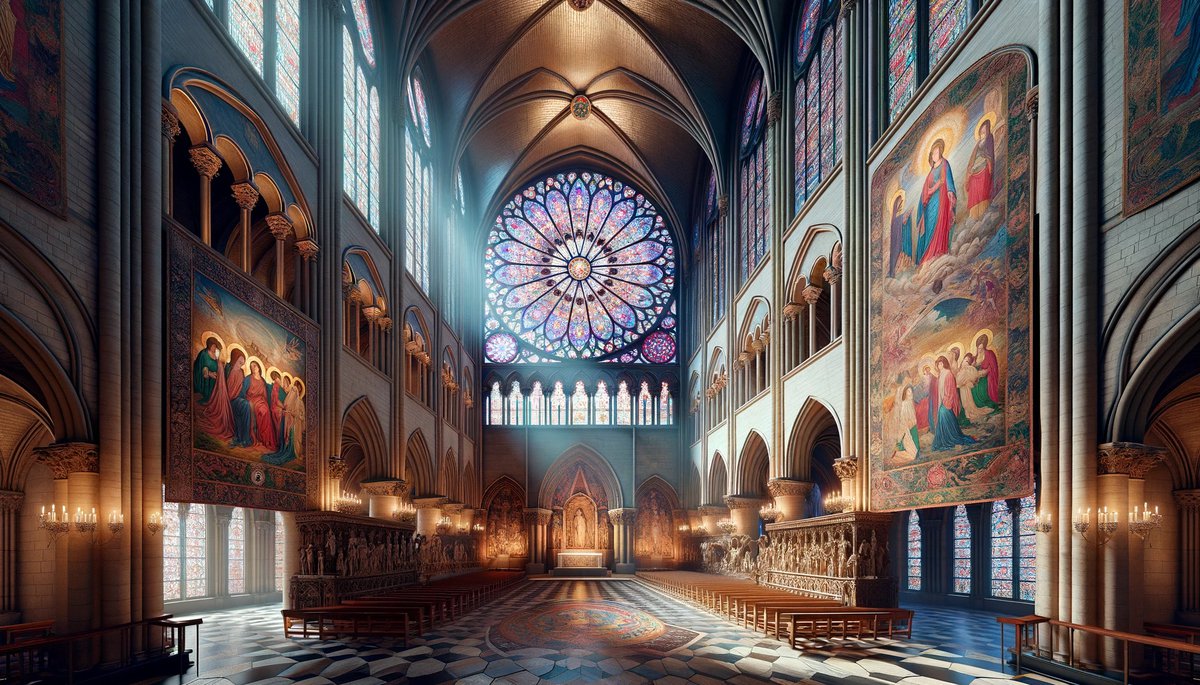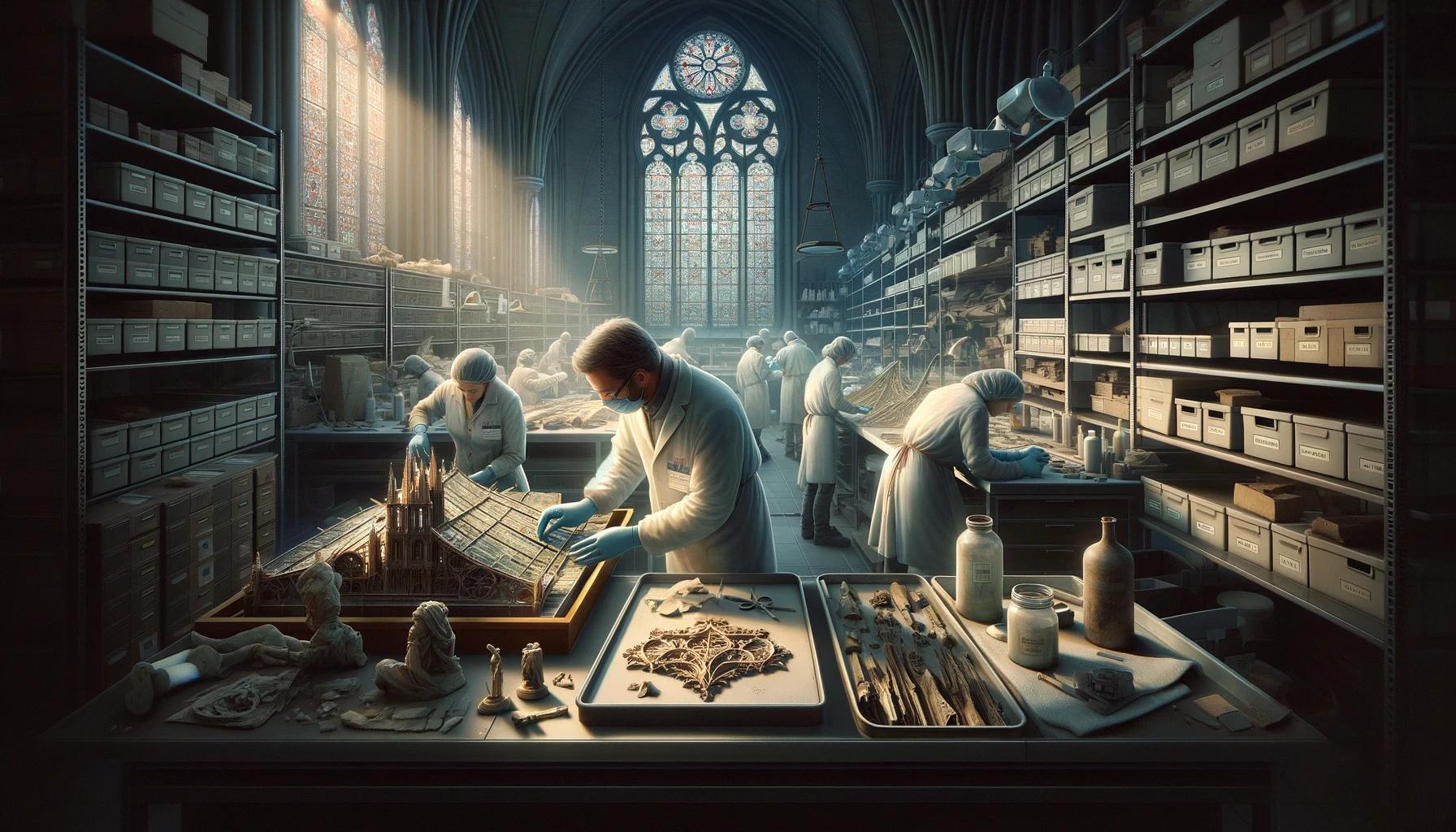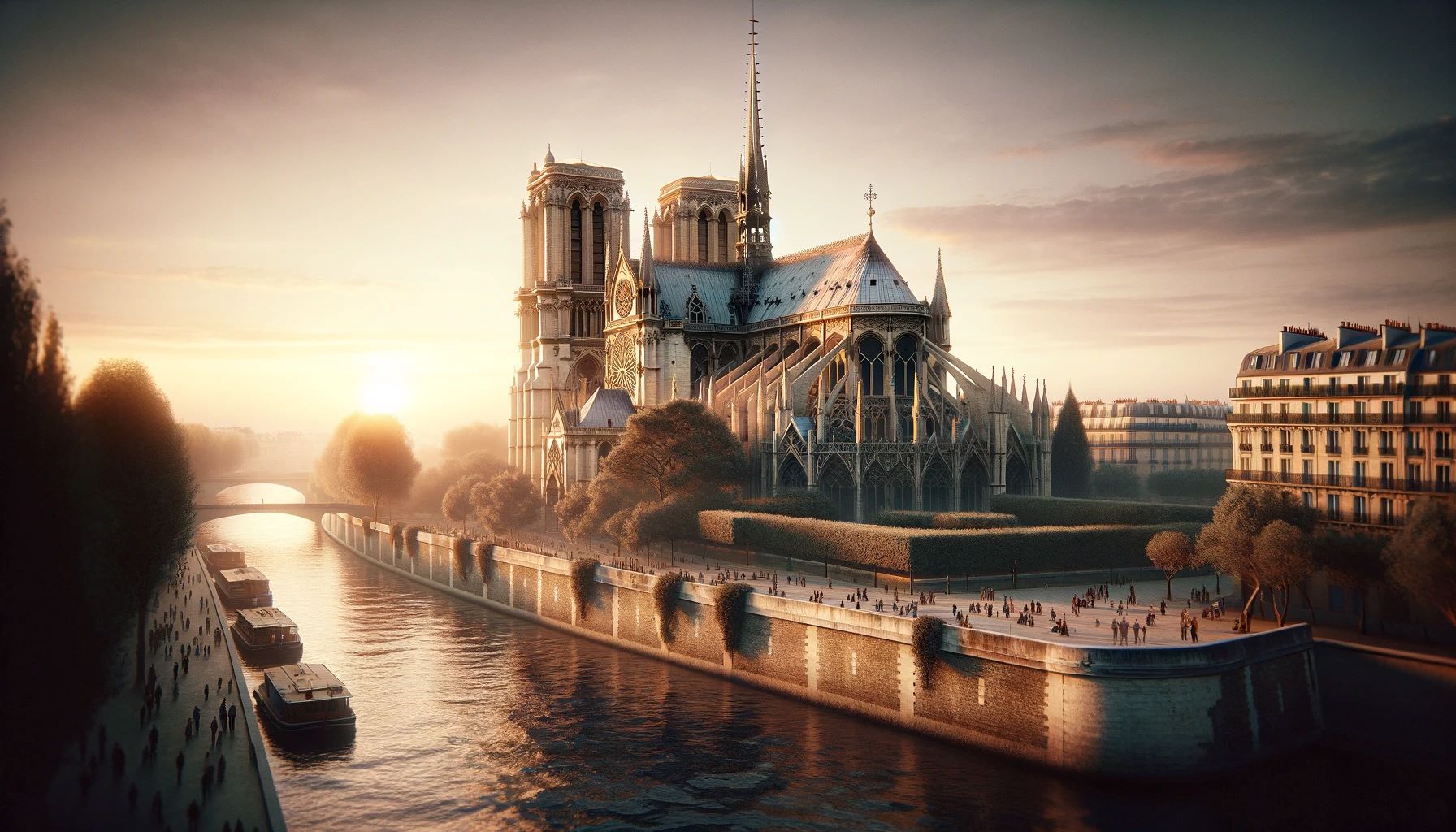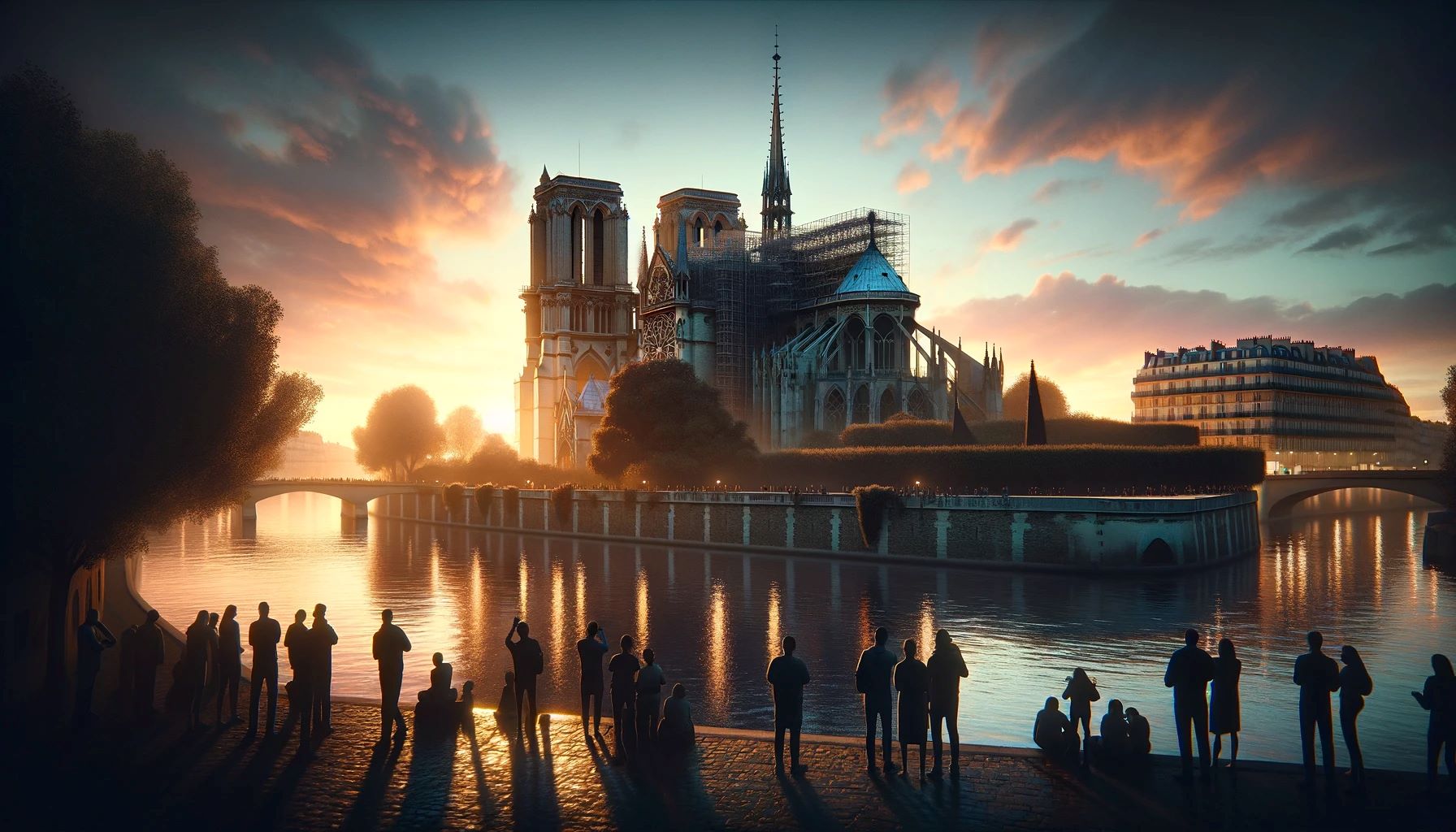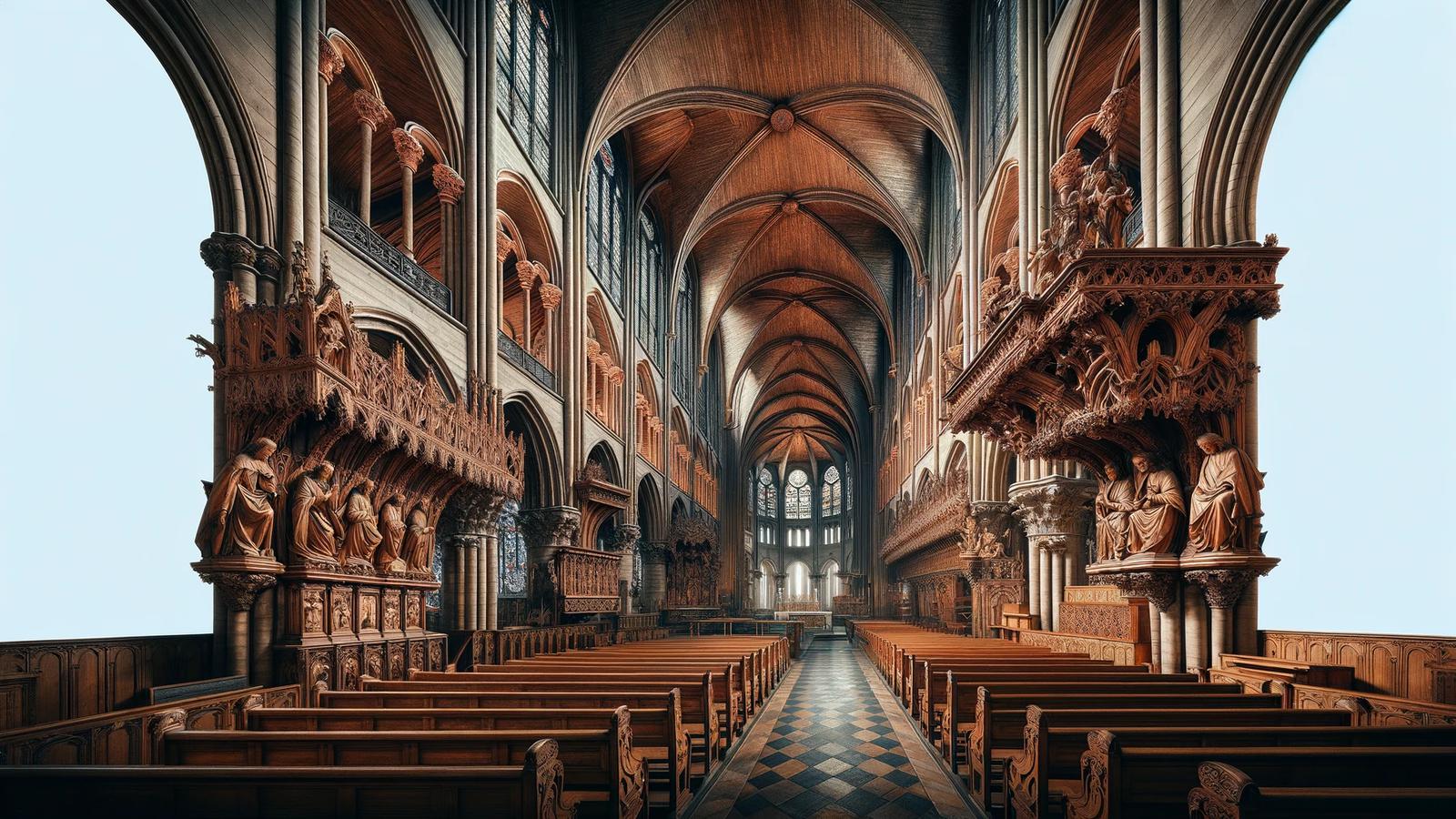Home>Theology and Spirituality>What Does Notre Dame Reveal About The Relationship Between Church And State In The Middle Ages?
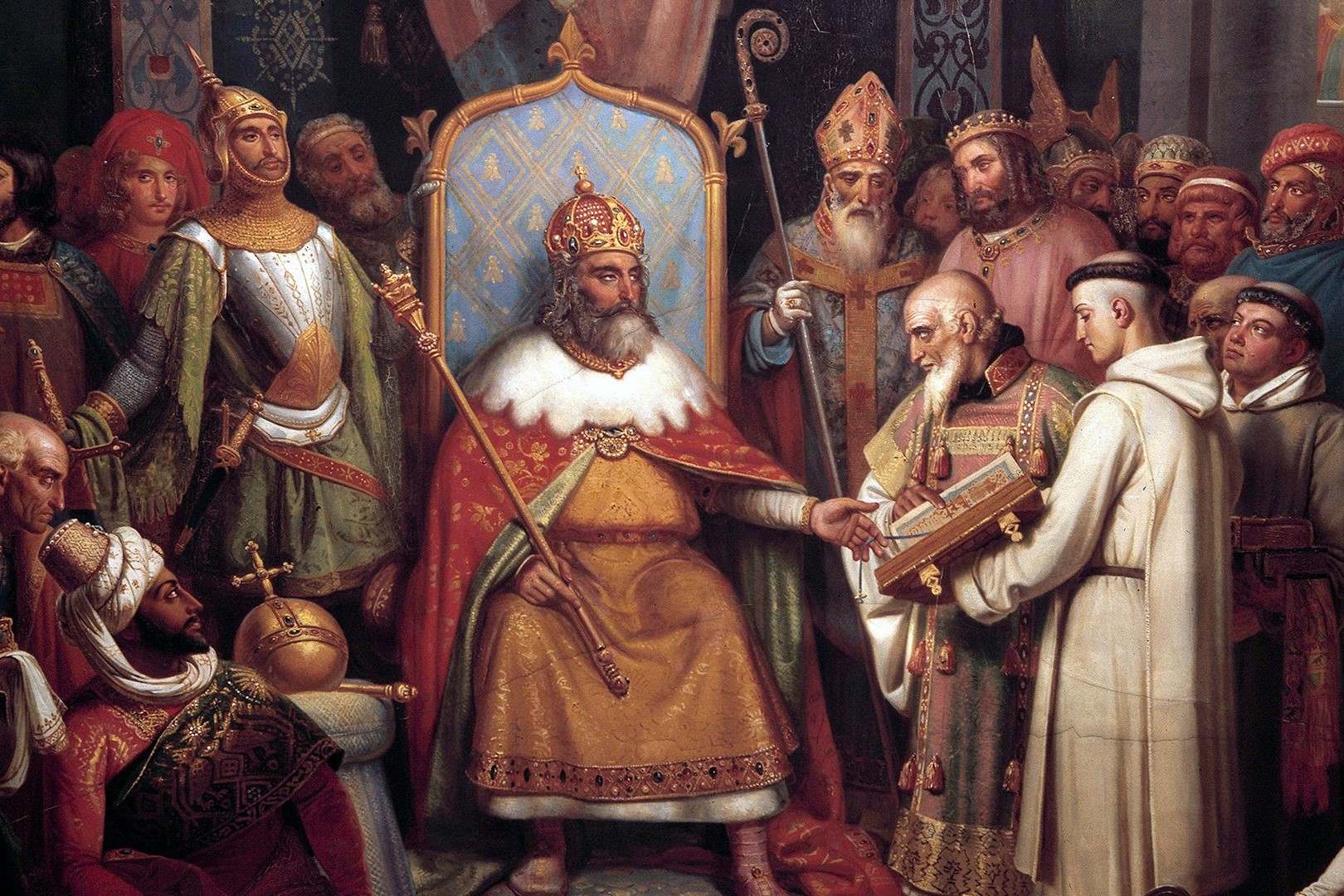

Theology and Spirituality
What Does Notre Dame Reveal About The Relationship Between Church And State In The Middle Ages?
Published: February 11, 2024
Jason DeRose, Managing Editor at Christian.net, uses his expertise in religion and journalism to deepen understanding of faith's societal impacts. His editorial leadership, coupled with a strong academic background, enriches the platform’s diverse content, earning him recognition in both journalism and religious circles.
Explore the intricate relationship between church and state in the Middle Ages through the lens of Notre Dame, delving into the intersection of theology and spirituality. Uncover the historical significance and implications of this dynamic interplay.
(Many of the links in this article redirect to a specific reviewed product. Your purchase of these products through affiliate links helps to generate commission for Christian.net, at no extra cost. Learn more)
Table of Contents
Introduction
The relationship between the church and the state during the Middle Ages was a complex and intricate interplay of power, influence, and authority. At the heart of this dynamic was the prominent role of the Church in medieval society, shaping not only religious practices but also political, social, and cultural landscapes. Understanding the nuances of this relationship provides valuable insights into the historical context of Notre Dame Cathedral and its significance as a symbol of the interwoven nature of church and state during that era.
The Middle Ages, often referred to as the medieval period, spanned roughly from the 5th century to the 15th century and was characterized by a hierarchical social structure. At the summit of this structure stood the Church, which held immense sway over the lives of individuals and the functioning of society. The clergy wielded spiritual authority, offering guidance, solace, and a sense of order in a world fraught with uncertainties. Moreover, the Church played a pivotal role in education, healthcare, and the administration of justice, further solidifying its influence across various domains of medieval life.
As a result of its widespread influence, the Church amassed significant wealth and power. Monasteries and cathedrals dotted the landscape, serving as centers of religious worship, learning, and governance. The clergy, including bishops and abbots, held sway not only over matters of faith but also exerted considerable influence in political affairs. This confluence of spiritual and temporal authority positioned the Church as a formidable force, often intersecting with the secular powers of the ruling monarchs and nobility.
The intricate relationship between the Church and the state was marked by a delicate balance of cooperation, conflict, and negotiation. While the Church held sway over matters of the soul, the state wielded authority over earthly governance and administration. However, the lines between these spheres often blurred, leading to power struggles and alliances that shaped the course of medieval history.
Against this backdrop, Notre Dame Cathedral emerged as a potent symbol of the intertwined nature of church and state. Its grandeur and architectural splendor reflected the aspirations of both religious and secular authorities, showcasing their shared interests and aspirations. The construction and adornment of Notre Dame were not merely acts of religious devotion but also political statements, underscoring the close ties between the ecclesiastical and secular powers of the time.
In exploring the relationship between the church and the state in the Middle Ages, the enduring legacy of Notre Dame Cathedral serves as a compelling lens through which to examine the intricate tapestry of power, faith, and governance that defined this pivotal historical epoch.
The Role of the Church in Medieval Society
The Church held a central and multifaceted role in medieval society, permeating nearly every aspect of daily life. At the core of its influence was the spiritual guidance and moral authority it provided to the populace. The clergy served as intermediaries between the divine and the earthly realm, offering sacraments, prayers, and religious instruction to the faithful. This spiritual stewardship not only shaped individual beliefs and practices but also underpinned the moral fabric of medieval communities.
In addition to its religious functions, the Church played a pivotal role in education and intellectual pursuits. Monastic schools and cathedral libraries served as bastions of learning, preserving and disseminating knowledge in an era marked by limited literacy and access to scholarly resources. Monks and scholars within the Church contributed to the preservation of classical texts, the advancement of theology, and the cultivation of artistic and scientific endeavors, laying the groundwork for the Renaissance and the Enlightenment.
Furthermore, the Church was intricately involved in matters of social welfare and justice. Monasteries provided refuge for the poor and the sick, offering sustenance, shelter, and medical care in an era marked by widespread poverty and limited healthcare infrastructure. The Church also administered a system of canon law, which governed moral and ethical conduct, as well as adjudicated disputes within the ecclesiastical domain.
Beyond these roles, the Church wielded significant economic and political influence. It held vast land holdings, amassed wealth through tithes and donations, and engaged in commercial activities, making it a formidable economic entity. Moreover, the clergy often held positions of authority and counsel within the royal courts, shaping policies and decisions that extended beyond religious matters.
The overarching impact of the Church on medieval society cannot be overstated. Its presence permeated the daily rhythms of life, from birth to death, and its institutions served as the bedrock of communal cohesion and stability. The interplay of spiritual, intellectual, social, and political functions positioned the Church as a defining force in shaping the medieval world, leaving an indelible imprint on the historical narrative of that era.
The Power and Influence of the Church
The power and influence of the Church during the Middle Ages were pervasive and far-reaching, shaping the fabric of medieval society in profound ways. At the apex of its authority stood the Pope, whose spiritual jurisdiction extended across Christendom, wielding immense influence over the faithful and secular rulers alike. The papacy served as a unifying force, providing a sense of cohesion and shared identity amidst the diverse kingdoms and principalities of medieval Europe.
One of the primary sources of the Church's power lay in its control over religious doctrine and sacraments. The clergy held sway over matters of salvation and eternal life, offering the promise of redemption to the devout while also instilling a sense of fear and reverence through the concept of divine judgment. This authority over spiritual matters conferred the Church with a profound influence on the beliefs, values, and ethical framework of medieval society.
Moreover, the Church's economic prowess bolstered its sway over the secular realm. Through tithes, offerings, and the acquisition of land, the Church amassed considerable wealth, enabling it to fund grand architectural projects, support charitable endeavors, and exert financial leverage in political affairs. The opulence of cathedrals, monasteries, and religious artifacts served as tangible manifestations of the Church's economic might, underscoring its prominence in the material realm.
The clergy, as the custodians of knowledge and learning, held significant sway over intellectual pursuits and education. Monastic scriptoria preserved and transcribed classical texts, theological treatises, and historical chronicles, ensuring the continuity of knowledge across generations. Furthermore, the patronage of scholars and the establishment of cathedral schools contributed to the cultivation of a learned class within medieval society, further solidifying the Church's influence in shaping intellectual discourse and scholarly endeavors.
In the realm of governance and politics, the Church wielded both direct and indirect authority. Bishops and abbots held sway over vast territories, exercising administrative and judicial functions within their domains. The concept of "divine right" conferred legitimacy upon monarchs, as their rule was often sanctioned and affirmed by the Church, imbuing them with a sense of religious authority. Additionally, the Church played a pivotal role in mediating disputes, forging alliances, and shaping diplomatic relations among secular powers, thereby exerting a subtle yet pervasive influence on geopolitical affairs.
The power and influence of the Church during the Middle Ages were not without challenges and controversies. The interplay of spiritual, economic, and political authority often led to conflicts with secular rulers, as well as internal schisms and reform movements within the Church itself. Nevertheless, its enduring impact on medieval society underscores the profound reach of its influence, leaving an indelible mark on the historical landscape of that era.
The Relationship Between Church and State
The relationship between the church and the state during the Middle Ages was characterized by a complex interplay of spiritual authority, political power, and mutual dependence. At the heart of this dynamic was the concept of dual authority, wherein the Church held sway over matters of the soul, while the state wielded authority over earthly governance and administration. This intricate balance of power gave rise to a symbiotic relationship, marked by cooperation, conflict, and negotiation.
The Church, as the custodian of spiritual authority, played a pivotal role in legitimizing the rule of monarchs and nobility. The concept of "divine right" conferred religious sanction upon secular rulers, imbuing their reign with a sense of sacred authority. In turn, the state provided the Church with protection, resources, and legal privileges, ensuring the preservation of its religious prerogatives and institutional autonomy. This mutual reinforcement of authority created a framework wherein the interests of the ecclesiastical and secular powers intersected and intertwined.
However, the relationship between the church and the state was not devoid of tensions and power struggles. Conflicts often arose over issues of jurisdiction, taxation, and the delineation of authority. Disputes between secular rulers and the clergy, known as investiture controversies, underscored the contest for control over ecclesiastical appointments and the boundaries of temporal influence. Moreover, the emergence of competing centers of power within the Church, such as the papacy and various monastic orders, further complicated the dynamics of church-state relations.
Despite these challenges, the relationship between the church and the state engendered a system of checks and balances, wherein each entity sought to assert its authority while recognizing the legitimacy of the other. The Church provided moral guidance, social cohesion, and educational infrastructure, while the state offered protection, governance, and material resources. This interdependence fostered a delicate equilibrium, wherein the interests of both church and state converged and diverged in a perpetual dance of negotiation and accommodation.
The enduring legacy of the relationship between the church and the state in the Middle Ages is reflected in the architectural splendor and symbolic significance of Notre Dame Cathedral. As a testament to the intertwined nature of ecclesiastical and secular authority, Notre Dame stands as a tangible embodiment of the complex dynamics that defined the medieval era, serving as a poignant reminder of the enduring interplay between spiritual and temporal powers.
Notre Dame Cathedral as a Symbol of Church and State
Notre Dame Cathedral, with its majestic spires and intricate Gothic architecture, stands as a resplendent symbol of the intertwined relationship between the church and the state during the Middle Ages. As a towering edifice of religious devotion and architectural grandeur, Notre Dame embodies the convergence of ecclesiastical and secular authority, reflecting the shared aspirations and mutual dependencies of both realms.
The construction of Notre Dame Cathedral was not merely an act of religious piety but also a statement of political and cultural significance. Commissioned by Bishop Maurice de Sully in the 12th century and completed over several decades, the cathedral served as a testament to the power and prestige of the Catholic Church, asserting its dominance in the spiritual and temporal realms. The grandeur of Notre Dame's design, including its soaring vaults, intricate rose windows, and imposing façade, conveyed the magnificence and authority of the Church, serving as a beacon of divine presence amidst the bustling streets of medieval Paris.
Moreover, Notre Dame's close association with the French monarchy further underscored its dual role as a symbol of both religious and secular power. The cathedral hosted numerous royal ceremonies, including coronations, weddings, and state funerals, cementing its status as a site of regal splendor and political legitimacy. The presence of monarchs and nobility within its hallowed halls affirmed the intertwining of church and state, as both entities sought to reinforce their authority through shared rituals and ceremonial pageantry.
The architectural elements of Notre Dame also reflected the fusion of spiritual and temporal motifs, embodying the aspirations and values of both church and state. The intricate sculptures adorning the cathedral's façade depicted biblical narratives, saints, and angels, serving as visual reminders of the Church's doctrinal teachings and moral authority. Simultaneously, the inclusion of heraldic symbols, royal insignia, and depictions of earthly rulers within the cathedral's adornments showcased the entwined interests of the monarchy and the Church, blurring the boundaries between divine sovereignty and earthly dominion.
In essence, Notre Dame Cathedral stands as a testament to the complex and multifaceted relationship between church and state in the Middle Ages. Its architectural magnificence, historical significance, and enduring legacy encapsulate the interwoven nature of ecclesiastical and secular authority, offering a tangible representation of the intricate tapestry of power, faith, and governance that defined this pivotal historical epoch.
Conclusion
In conclusion, the relationship between the church and the state in the Middle Ages was a dynamic interplay of power, influence, and cooperation, as evidenced by the enduring legacy of Notre Dame Cathedral. The Church, with its multifaceted role in shaping spiritual, intellectual, social, and political spheres, wielded significant authority, while the state provided governance, protection, and material resources. This intricate balance of power gave rise to a symbiotic relationship, marked by both collaboration and contention.
Notre Dame Cathedral, as a symbol of church and state, encapsulates the convergence of ecclesiastical and secular authority. Its architectural splendor, royal associations, and religious significance serve as a poignant reminder of the intertwined interests and aspirations of both realms. The cathedral's construction and adornment were not only acts of religious devotion but also political statements, underscoring the close ties between the ecclesiastical and secular powers of the time.
The enduring legacy of Notre Dame Cathedral serves as a compelling lens through which to examine the intricate tapestry of power, faith, and governance that defined the medieval era. Its grandeur and historical significance stand as a testament to the complex and multifaceted relationship between church and state, offering valuable insights into the historical context of the Middle Ages.
In exploring the relationship between the church and the state during this pivotal historical epoch, we gain a deeper understanding of the interplay of spiritual and temporal authority, the complexities of dual jurisdiction, and the enduring impact of this dynamic relationship on the historical narrative. Notre Dame Cathedral, with its rich symbolism and historical resonance, continues to inspire contemplation and reflection on the intertwined nature of church and state, leaving an indelible mark on the historical landscape of the Middle Ages.
